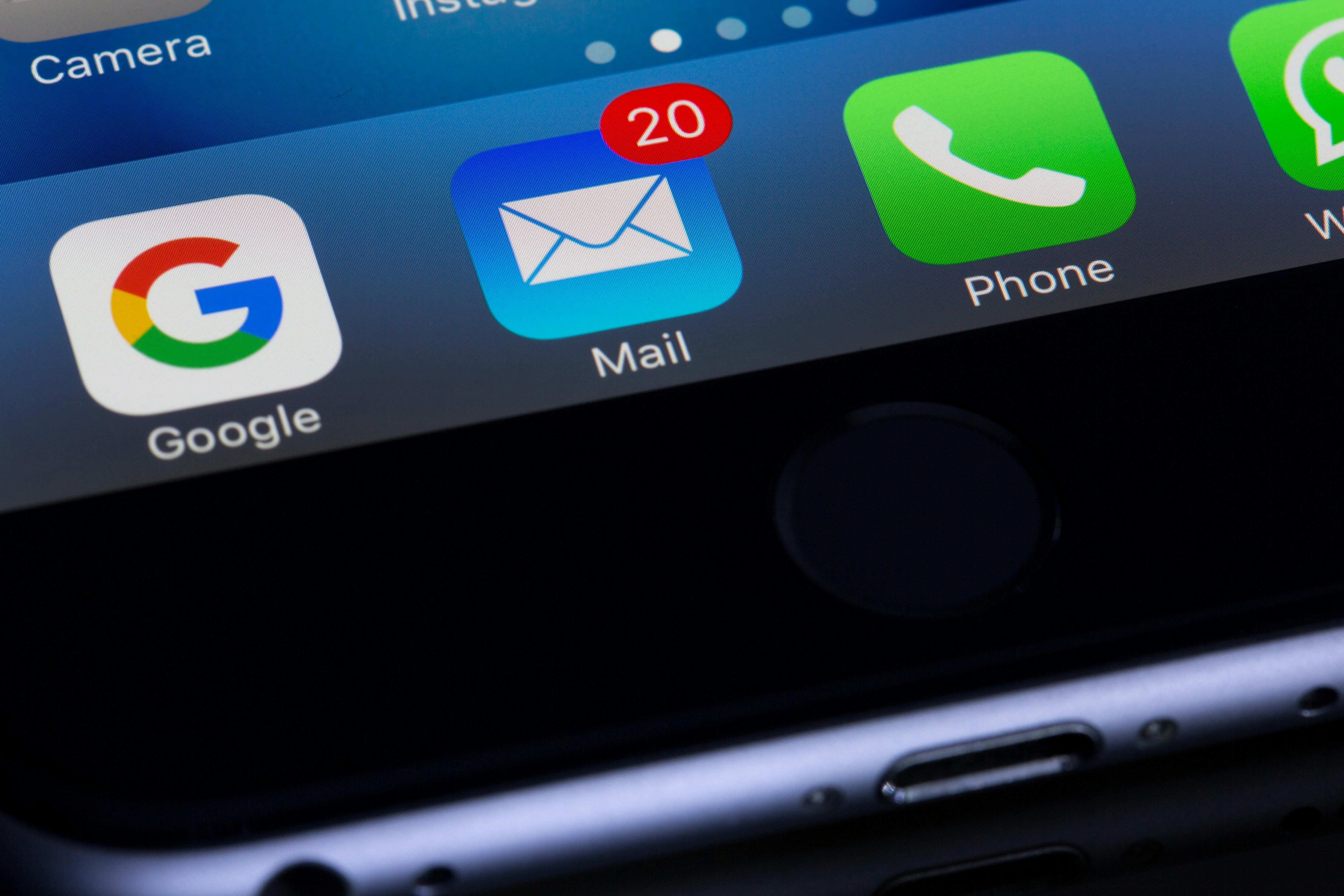Lead Generation
What is a Multi-Channel Marketing System? Key Insights
Explore how a multi-channel marketing system can elevate your strategy, ensuring your brand engages effectively across diverse platforms.
Jul 12, 2024

Are you curious why some brands manage to appear everywhere from your email inbox to your social media feeds? This is the power of a multi-channel marketing system at work. By engaging with your audience through a variety of touchpoints, a multi-channel approach ensures that your message resonates widely and effectively.
So, what exactly is a multi-channel marketing system, and why should you care? Let's dive into how this strategy can supercharge your marketing efforts and keep your brand top of mind.
Understanding Multi-Channel Marketing Systems
You'll find that multi-channel marketing systems are crucial for reaching audiences on multiple platforms. Engaging customers through various touchpoints ensures your brand's message gets seen and heard wherever your audience is.
Definition and Scope
A multi-channel marketing system uses several marketing channels to interact with potential customers. These channels include email, social media, SMS, and direct mail. The goal is to provide a seamless experience regardless of the medium. If you're only using email or LinkedIn for your outreach, consider expanding to other channels. This increases your chances of catching your target audience's attention.
Core Components
To implement a multi-channel marketing system effectively, focus on three core components: integration, consistency, and data analysis.
Integration: Ensure all your channels work together seamlessly. Use marketing automation tools to manage this integration. Integrated channels help provide a unified message and avoid disjointed communication.
Consistency: Maintain a consistent brand message across all channels. Whether on social media or email, your tone and style should feel unified. Consistency builds trust and strengthens brand identity.
Data Analysis: Gather and analyze data from each channel to understand what's working. Use this data to refine your strategies. Successful multi-channel systems continually adapt based on insights from analytics.
Common Mistakes and Misconceptions

A typical oversight is focusing too much on a single channel, believing it's the only avenue needed. Limiting yourself reduces your outreach potential. Diversify your approach instead.
Another misconception is thinking all channels should foster immediate sales. Use some for awareness and nurturing relationships. A mix caters to different stages of the customer journey.
Practical Tips for Avoiding Mistakes
Diversify Channels: Don't rely solely on cold emails or LinkedIn. Experiment with other social media platforms, blogs, and webinars.
Set Clear Objectives: Define what each channel should achieve. For example, use LinkedIn for networking and email for personalized offers.
Monitor and Adapt: Regularly check which channels perform best. Adapt your strategy based on these insights.
Techniques and Methods
Channel-Specific Variations
Email Marketing: Personalize emails by segmenting your audience. Use A/B testing to find the best subject lines and content.
Social Media: Engage with followers through comments and direct messages. Share valuable content to build authority.
SMS Marketing: Use sparingly for urgent messages or exclusive offers. Ensure it's direct but not intrusive.
Direct Mail: Combine with digital efforts for a comprehensive strategy. Customize mailers to make them relevant.
Create a Content Calendar: Plan your posts and emails in advance. A calendar ensures consistent messaging and timely updates.
Leverage Automation: Automate repetitive tasks. Tools like HubSpot and Mailchimp help manage multiple channels efficiently.
Analyze and Optimize: Regularly review performance metrics. Adjust your tactics to maximize engagement.
A multi-channel marketing system enhances your reach and effectiveness. By integrating and analyzing efforts across various channels, you create a cohesive strategy that resonates with your audience. Keep these principles and practices in mind to optimize your marketing endeavors.
Benefits of Multi-Channel Marketing
Multi-channel marketing is essential for engaging your audience on diverse platforms. It optimizes your marketing strategy effectively by integrating messages and analyzing data.
Increased Reach and Engagement
Using multiple channels boosts your reach. If you're only using email, you miss those who hang out on social media. Each platform caters to different segments of your target audience, so covering all bases maximizes your audience.
Example: Utilize LinkedIn for professional connections, Instagram for visual content, and email for direct communication. This way, you're not putting all your eggs in one basket.
Common Mistake: Focusing too much on one channel, thinking it’ll be a silver bullet. Diversify to catch more eyes and hold interest.
Practical Tip: Plan unified campaigns that spread across different platforms but keep the core message consistent. Use scheduling tools to plan and automate posts. This saves time and ensures your presence stays active and engaged.
Enhanced Customer Experience
A cohesive multi-channel approach creates a seamless customer journey. If a user sees consistent messaging across platforms, they’re more likely to trust your brand. This consistency builds familiarity and strength in your brand's reliability.
Example: A customer might first hear about you on Instagram, then receive a follow-up email, and later see an ad on LinkedIn. Each touchpoint reinforces the previous one.
Common Misconception: Thinking immediate sales are the primary indicators of success. Building relationships takes time, and the customer journey isn't always straightforward.
Practical Tip: Map out your customer journey and ensure each channel offers unique but complementary information. For instance, use Instagram to showcase your company culture, LinkedIn for professional success stories, and email for newsletters or direct promotions. Tailoring the content for each channel keeps customers engaged and informed at each touchpoint.
This method integrates not just your message but also the experience for your customers, making their journey with your brand smooth and more likely to convert.
By leveraging these benefits of multi-channel marketing, you optimize your engagement strategies and build a stronger connection with your audience.
Challenges of Implementing Multi-Channel Marketing

Implementing a multi-channel marketing system can seem like juggling several balls at once. You need to strike a balance between different platforms while ensuring everything works harmoniously. Let's dig into some of the challenges you might face.
Integrating Multiple Channels
Integrating multiple channels can be a daunting task. Imagine you're trying to coordinate a group of musicians to play in perfect harmony; each one needs to know their part to create a beautiful symphony. It's the same with marketing channels. Some common hurdles include:
Technical Compatibility: Not all platforms play nice with each other. For instance, integrating an email marketing tool with a social media scheduler might require some technical know-how. You might need APIs, third-party integrations, or custom workflows to bridge the gaps.
Data Silos: Data from different channels may not automatically sync. You could end up with fragmented information, making it hard to get a comprehensive view of your marketing performance. Invest in a robust CRM system to unify your data streams.
Resource Allocation: Managing multiple channels requires significant time, effort, and money. Prioritize your resources based on where your audience is most active. Start with one or two channels before expanding.
Practical Tips:
Use integrated marketing platforms like HubSpot or Marketo to simplify the process.
Regularly audit your tools for compatibility and integration needs.
Train your team on how to utilize these tools effectively.
Consistency Across Platforms
Keeping your messaging consistent across different platforms is crucial. Think of it like maintaining a uniform appearance across your brand’s storefronts; customers should recognize you no matter where they find you. Inconsistencies can confuse your audience and dilute your brand message.
Message Variation: Tailoring messages to fit the tone and style of each platform while keeping the core message consistent is tricky. For instance, a LinkedIn post might be more formal compared to a casual Instagram story.
Brand Voice: Your brand voice should be unmistakable across all channels. If your email marketing has a friendly tone, but your social media posts are stuffy, it can create a disconnect.
Visual Identity: Just like your messages, visual elements such as logos, color schemes, and fonts should remain consistent. Inconsistent visuals can weaken brand recognition.
Practical Tips:
Develop a content calendar to plan and schedule consistent messages.
Create a brand guideline document that your team can refer to.
Use analytics to continuously measure and refine your approach, ensuring message alignment.
Incorporating these practices can help you overcome these challenges, ensuring that your multi-channel marketing efforts are both effective and manageable.
Best Practices for Multi-Channel Marketing
Understanding and applying best practices can make your multi-channel marketing more effective. Here are key points to focus on:
Strategic Planning and Coordination
Planning and coordination are the backbone of multi-channel marketing. You must outline clear objectives for each channel. Identify the unique strengths and audience of each platform. This helps you tailor your message accordingly, ensuring relevancy and engagement.
A common mistake is treating all channels the same. For instance, the approach you use on LinkedIn should differ from email. LinkedIn is great for professional networking, so you might post industry insights or company updates. Email campaigns, on the other hand, can be more personalized and direct, focusing on special offers or newsletters.
To avoid missteps, map out a content calendar. This keeps your campaigns organized and ensures timely execution. Using tools like Trello or Asana can help you track progress and maintain consistency. Consistency builds trust and reinforces your brand message across all channels.
Leveraging Technology and Analytics
Utilizing technology and analytics is essential. Integrated marketing platforms like HubSpot or Marketo offer automation, allowing you to manage campaigns without getting bogged down by manual tasks. Automation ensures you can focus on strategy rather than minutiae.
A big misconception is thinking technology alone will solve all problems. Technology is a tool, not a complete solution. You need to interpret data correctly to make meaningful adjustments. For instance, if email open rates are low, look at your subject lines or sending times rather than just changing the template.
Analytics provide insights into what’s working and what’s not. Use tools like Google Analytics to track performance metrics. Monitor key indicators like engagement rates, click-through rates, and conversion rates. This data helps you tweak your strategies in real-time, optimizing for better results.
Combining these best practices ensures your multi-channel marketing efforts are not only cohesive but also strategically sound and technologically supported.
Conclusion
Adopting a multi-channel marketing system can significantly enhance your brand's reach and engagement. By strategically planning and tailoring your messaging for various platforms, you ensure a cohesive and effective marketing approach. Leveraging technology and analytics tools will help you track performance and make data-driven decisions. With the right tools and practices in place, your multi-channel marketing efforts will be well-coordinated and impactful, driving optimal results for your business.
Frequently Asked Questions
What is multi-channel marketing?
Multi-channel marketing is a strategy that uses multiple channels to reach customers. These channels can include social media, email, websites, and more. The goal is to provide a seamless customer experience across all platforms.
What are the benefits of multi-channel marketing?
The main benefits include increased reach, improved customer engagement, and higher conversion rates. It allows brands to meet customers where they are and provides multiple touchpoints for engagement.
What are the challenges of multi-channel marketing?
Challenges include maintaining consistency across channels, tracking performance metrics, and managing the complexity of coordinating efforts across various platforms. Technology and careful planning are crucial to overcoming these challenges.
How can I maintain consistency in multi-channel marketing?
Use integrated marketing platforms and follow a cohesive strategy for messaging and visual identity. Consistency in branding elements, tone, and messaging helps create a unified customer experience.
What tools can help with multi-channel marketing?
Tools like Trello or Asana can help with organization. Integrated marketing platforms assist with automating tasks, and analytics tools like Google Analytics track performance metrics.

